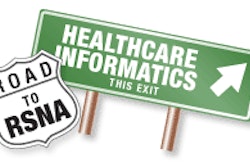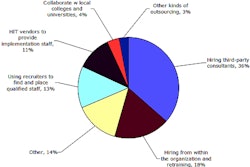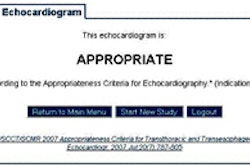The research team has developed code to extract dose information as DICOM SR objects from a CT scanner (Discovery CT750 HD, GE Healthcare, Chalfont St. Giles, U.K.), and store this information in a local database. Daniel Rubin, MD, assistant professor of the department of radiology, will describe how reports about the dose information extracted from the DICOM SR objects are created, and how he and his colleagues use a utility to query the dose database to mine it for dose trends in patient populations.
The research team has been developing the dose recording and reporting methodology for almost a year. The system will work with any GE CT scanner that incorporates DICOM dose SR recording capabilities. Rubin told AuntMinnie.com in a telephone interview that he is hopeful his team will be able to develop a generic system soon that can be used with any vendor's new CT scanner equipment.
The project was initiated with the objective of creating a means by which near-instantaneous feedback of radiation dose being produced by a CT scanner could be obtained, Rubin explained. "We also want to be able to compare the doses of our CT exams against the American College of Radiology national benchmarks." At some point, the system will also facilitate data sharing with national dose registries.
Rubin also will discuss his concerns about the accuracy of using optical character recognition to extract dose information. "While this technology may be the only way to extract dose information from older legacy CT scanners, it has been proven not to be 100% accurate," he said. "Radiology professionals need to be aware of this."



















